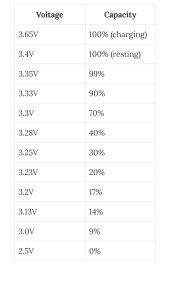Thanks. I’m getting these Eve cells:
Find many great new & used options and get the best deals for Lifepo4 12v 300ah. CaTL cells grade A. Available For Immediate collection at the best online prices at eBay! Free delivery for many products.
www.ebay.co.uk
I will be collecting in person (4 hour round trip ugh). The seller has given me the data sheets and seems above board. The ones from China you mention would not be far from £600 per 4 cells with shipping cost and import tax. less for 8 cells. But the time for them looks like atleast a couple months. A bit long for me as I’m doing this project now.
On the BMS, what do you think about pairing the cells (2 in paralell) and putting one lead on each pair (and then the pairs in series) to use a 4S BMS? I can get a Daly 4S 150amp very reasonably priced from the same seller.




